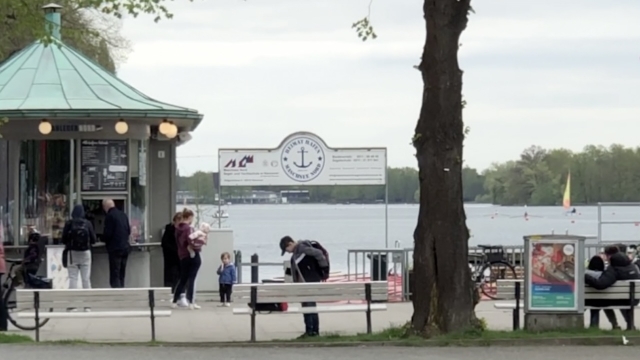Fly to the Greek Rhodes Island in Summer!
First, this is the Greek Rhodes Island and it should not be confused with the State of Rhode Island in the New England region of the United States of America.
If you plan to travel to the Greek Rhodes Island, do that in summer. Here is useful information to help you enjoy your time during sunny weathers on beautiful Rhodes beaches, historical locations and ancient towns.
It is the largest island among the Dodecanese islands, covering an area of 1,400 square kilometres in the south of the Aegean Sea, southeast of Tilos Island and south of the Turkish Marmaris.
There are about 117,007 inhabitants in 22 towns and villages in Rhodes Island.
The towns and villages with more than one thousand inhabitants include Rhodes City, Ialysos, Afantou, Kalythies, Archangelos, Kremasti, Koskinou, Paradeisi, Pastida, Maritsa, Ampona, Soroni, Lardos, Psinthos, Malona and Lindos.
The Greek Rhodes Island is sunny almost all of the year and it has sandy and still virgin beaches, some historical locations that dated back to the Byzantine era and varied landscape from arid and rocky to lush and forested lands.
Café shops, clubs, historical remains, warm weather and sandy beaches attract tourists to the island.
The sandy beaches along the Greek Rhodes Island include Doreta Beach on the west coast of Rhodes, Ellis Beach, Kallithea Beach at the northeast, Petaloudes Beach and Kamiros Beach at the northwest, Lindos near the southeast, Atavyros near the southwest and Notia Rodos at the south.
The attractions in the Greek Rhodes Island are many and they are accessible from any location in the island by either foot, bicycles, motorcycles, buses, taxies or boats.
Here are some of them at the Acropolis of Lindos, Aquarium, and lighthouse fort, Rhodes Castello, Medieval Castle of the Knights, archaeological monuments of Rhodes, Street of the Knights with the Byzantine museum, parts of the Byzantine Castle, the Socratous Square and Suleiman Mosque.
As Rhodes Island was An Ancient Medieval Modern Island of the Sun, many sources consider it as a cultural reference. Homer extolled the prosperity of the Rhodians who "enjoyed the smiles of Zeus the son of Cronos" and "who filled their treasuries with untold wealth."
Rhodes Town is the main port of the Dodecanese, and it had been a sea crossroad between Constantinople in Turkey and Alexandria in Egypt.
It had strong commercial and cultural ties with the Ptolemies in Alexandria and formed with Alexandria the Rhodo-Egyptian alliance to control the trade throughout the Aegean Sea in the 3rd century BC.
The existence of Hora as one of the three quarters in the Old Town and as referred to it as the Turkish quarter is the primary commercial centre in the town.
Different shops and restaurants expose the Turkish presence, products and style of life in the Greek Rhodes Island. The other two quarters are the Kollakio or the Knights' Quarter and the Jewish Quarter.
Rhodes shared through its schools of science, literature, philosophy, sculptors and rhetoric masters with Alexandria. To destroy that alliance, Antigonus ordered his son Demetrius to siege Rhodes and after many attempts that lasted for one year, he failed in his mission and signed a peace agreement.
He left his military equipments and the Rhodians sold the equipments to build the statue of their god, Helios the god of the sun, and they call the statue the Colossus of Rhodes.
Historical locations include the Medieval Town of Rhodes, known as the Old Town of Rhodes, which is a world heritage site listed by the UNESCO, with its defensive great walls, the fortifications and the Colossus of Rhodes as one of the Seven Wonders of the World.
Many stories about the Colossus in the Greek Rhodes Island have been told. However, no one proves until now that the Colossus of Rhodes really existed.
As one of the Aegean Greek Islands, the Greek Rhodes Island played different roles in history, aligning itself with Athens sometimes and standing against it other times.
At one time when it stood with Athens, the two powers defeated Sparta in the battle of Knidos in 394 BC. Read more about the history of the Greek Rhodes Island at Rhodes Island
Useful Resources
Lonely Planet Rhodes & the Dodecanese
The best thing to do is to have the guide "Rhodes & the Dodecanese". This guide walks you through the streets, historical sites, up and down the hillsides and deep on the Aegean Sea taking ferries to the nearby islands.
The guide to Rhodes Island is filled with up-to-date information on the best places to stay and eat, detailed maps and travel itineraries, helpful pre-departure advice and a handy Greek/English phrasebook.
The Siege of Rhodes
By the early sixteenth century, Rhodes, the "Isle of Blossoming Roses," had become a throne in the Ottoman Empire's side. Located only eleven miles from the coast of Asia Minor, the island was controlled by the Order of the Knights of St. John (later known as the Knights of Malta), former crusaders who by then had two specialties: tending to ailing Christians and pirating Muslim ships.
In 1522, Sultan Suleiman I resolved to put an end to it and unleashed a force of a hundred thousand troops to besiege the island. Rhodes's proximity to Ottoman territory ensured that the Turkish soldiers would be well armed, well fed, and quickly replaced if killed or injured. Facing them was a force of only six hundred knights, fifteen hundred mercenaries and three thousand native Rhodians.
Rhodes: An Ancient Medieval Modern Island of the Sun
Famous from the most ancient times Rhodes became a cultural point of reference. Homer extolled the prosperity of the Rhodians.
Much more than a travel guide the book covers the history of Rhodes-from ancient to medieval to modern times. Mythology and folklore as handed down through the generations has revealed to the reader. Rhodes is a book that is necessary for those who are planning a visit and a great read for the armchair traveller.
If you liked this page about the Greek Rhodes Island, please Forward 100 Beautiful Cities to your friends and share it with your social network through the small buttons on the page. Thanks.
You can use the following form to comment on the Greek Rhodes Island or to write about it.
However, if you wanted to write about other beautiful places on the Aegean Sea, see Aegean Greek Islands, Ancient Greek Culture, Beautiful Greek Islands, Greek Mykonos Island, Greek Rhodes Island, Mount Olympus and Olympia.
If you wanted to write about other beautiful places, use the form on Any Beautiful City to do that. Thanks.
Have A Great Story About Some Beautiful Sites in the World?
Do you have a great story about any beautiful site in the world? Share it!
Solo Build It on the image bar at the bottom of the Greek Rhodes Island empowers this network.
100 Beautiful Sites in the World| 100 Beautiful Sites Blog| Beautiful Site Map| Beautiful Scene Newsletter| Contact Beautiful Sites| User Interface| 350| Aarhus| Aegean Sea| Altai Mountains| Amazon Rainforest| Amman| Dalarna| Gondar| Gujarat| Indus River| Mississippi River| Rub al-Khali| Sagarmatha National Park| Saint Louis| Serengeti| Siberia| Solomon Islands| Sulu Sulawesi Sea| Thames| Tian Shan| Timbuktu| Tokyo| Trinidad| Tuvalu| Upper Po Valley| Valdes Peninsula| Vavau| Venice| Wadden Sea| Yamal Peninsula| Yangtze River| Zackenberg| Zahara de la Sierra| Greek Rhodes Island| Close to the River De Ijssel Netherlands| Close to the River De Ijssel Netherlands - Comments| Malapascua is Divers Paradise| Peruvian Models Could Escalate Melting of the Glaciers| The Culture of Olympia has Influence Elsewhere| The Story of My Life Ended in Gondar|

